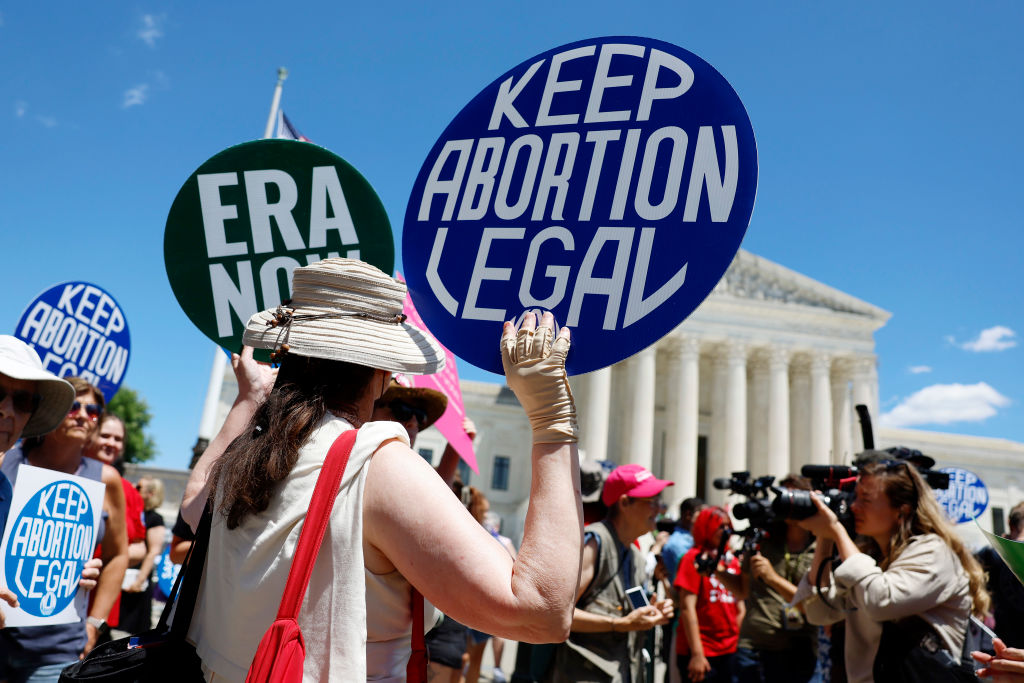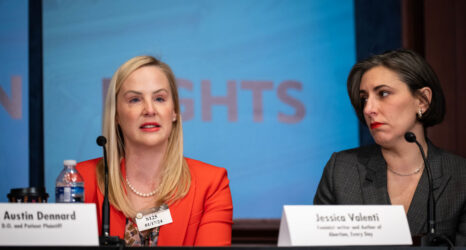
Since the U.S. Supreme Court decision in Dobbs v. Jackson Women’s Health Organization—which overturned Roe v. Wade and created a chaotic and devastating abortion access landscape—the number of out-of-state patients I’ve seen as an abortion provider in Maryland has skyrocketed.
As it stands right now, 14 states ban abortion entirely, and seven additional states have restrictions on abortion care including bans after six weeks of gestation, long before many people know they are pregnant or are ready to make a decision about their pregnancy. As a result, more than 171,000 women traveled out-of-state for abortion care in 2023, and it’s likely that more tried and were unable to surmount the barriers to do so.
It pains me to think about all the patients who do not make it to the health center, the ones who cannot navigate the myriad barriers to get the abortion care they need out-of-state.
Power to Decide’s AbortionFinder site has seen more than 8 million visits since the Dobbs decision. Many of the individuals who were able to get the abortion they sought had to navigate costly barriers such as time off work, transportation costs and childcare, in addition to the cost of the appointment. However, the patients I see are the ones who have overcome all of these obstacles to get the basic healthcare they need. People have jumped through hoops to come to the health center where I see patients—I’ve seen people from as far as Texas and Florida—who did everything they could to make it to a state where they can get abortion care. It pains me to think about all the patients who do not make it to the health center, the ones who cannot navigate the myriad barriers to get the abortion care they need out-of-state.
Without a doubt, it is clear that the decision in Dobbs has exacerbated barriers to accessing abortion and other forms of sexual and reproductive healthcare. What is also clear from the Dobbs decision is that Roe was never enough. The sad reality is that even before it was overturned, Roe’s existence did not ensure adequate abortion access for everyone. Those unable to take advantage of the “protections” of Roe were and continue to be the most historically marginalized among us.
Barriers to coverage, such as the harmful Hyde Amendment and medically unnecessary restrictions such as waiting periods and mandatory ultrasounds, all combine to put abortion out of reach for many people—particularly people of color, young people, and people with low incomes. In a post-Roe world, these communities disproportionately continue to face these barriers. For example, a majority of Black women aged 15-49 live in a state with abortion bans or impending restrictions.
What is also clear from the Dobbs decision is that ‘Roe‘ was never enough.
Although it will take many years before we can fully understand the impact of the Dobbs decision, it is already clear that denying access to abortion care results in negative consequences. People denied abortions suffer more economic hardships than those who are able to get an abortion, according to the Turnaway study. Individuals also faced negative mental and physical impacts on their health. Despite how clear bans on abortion can negatively affect physical, mental and economic well-being, two years after Dobbs, antiabortion advocates and policymakers continue to push for further restrictions on abortion care.
Though the current landscape is grim, there is still hope. AbortionFinder and other resources can help people locate the care and support services they need, regardless of where they live. In the midst of chaos and confusion, AbortionFinder, available in both English and Spanish, provides millions of people across the United States access to trusted, verified abortion providers and assistance resources at a time when they need this information the most.
Now more than ever, we must ensure every resource is accessible and available to those seeking care in this post-Dobbs landscape. As a provider, I know that in our fight for every person to get the reproductive healthcare they need, it is the people who never make it to me whose needs we must focus on in our work. For them, it is not enough to restore Roe, we must reimagine something better, and bolder.
Editor’s note: Several organizations and resources exist for those seeking procedural abortions, abortion pills and those in need of assistance:
- To find providers who mail pills to all states, visit plancpills.org or ineedana.com.
- To find verified abortion care, use AbortionFinder.org.
- To access medical support, visit the M+A Hotline or Aya Contigo.
- To access peer support, head to Reprocare.com.
- To access free, confidential legal services, visit or call the Repro Legal Helpline.
- For help finding the money for an abortion, people can ask the telehealth provider or reach out to a local abortion fund.
Up next:
U.S. democracy is at a dangerous inflection point—from the demise of abortion rights, to a lack of pay equity and parental leave, to skyrocketing maternal mortality, and attacks on trans health. Left unchecked, these crises will lead to wider gaps in political participation and representation. For 50 years, Ms. has been forging feminist journalism—reporting, rebelling and truth-telling from the front-lines, championing the Equal Rights Amendment, and centering the stories of those most impacted. With all that’s at stake for equality, we are redoubling our commitment for the next 50 years. In turn, we need your help, Support Ms. today with a donation—any amount that is meaningful to you. For as little as $5 each month, you’ll receive the print magazine along with our e-newsletters, action alerts, and invitations to Ms. Studios events and podcasts. We are grateful for your loyalty and ferocity.





